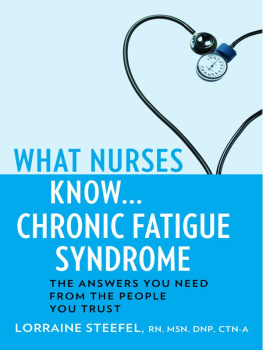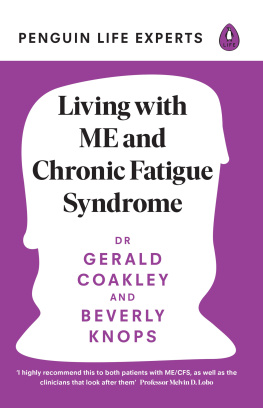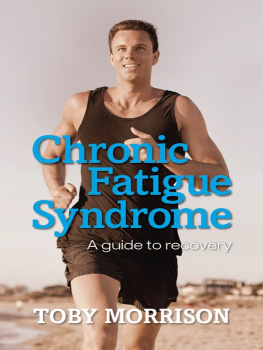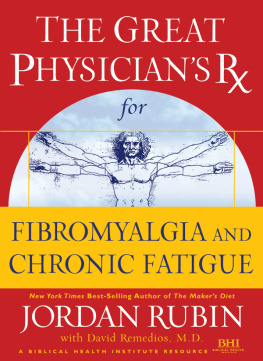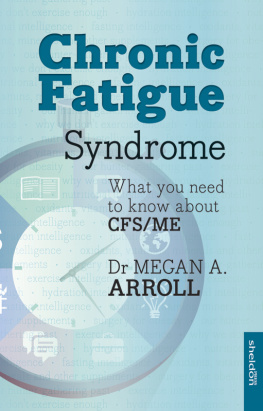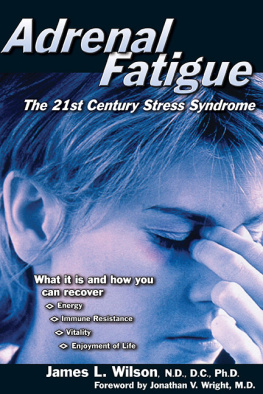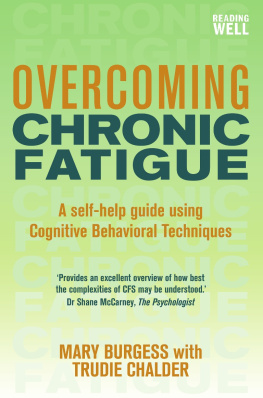Edward Shorter - From Paralysis to Fatigue
Here you can read online Edward Shorter - From Paralysis to Fatigue full text of the book (entire story) in english for free. Download pdf and epub, get meaning, cover and reviews about this ebook. year: 1992, publisher: Free Press, genre: Religion. Description of the work, (preface) as well as reviews are available. Best literature library LitArk.com created for fans of good reading and offers a wide selection of genres:
Romance novel
Science fiction
Adventure
Detective
Science
History
Home and family
Prose
Art
Politics
Computer
Non-fiction
Religion
Business
Children
Humor
Choose a favorite category and find really read worthwhile books. Enjoy immersion in the world of imagination, feel the emotions of the characters or learn something new for yourself, make an fascinating discovery.

- Book:From Paralysis to Fatigue
- Author:
- Publisher:Free Press
- Genre:
- Year:1992
- Rating:3 / 5
- Favourites:Add to favourites
- Your mark:
- 60
- 1
- 2
- 3
- 4
- 5
From Paralysis to Fatigue: summary, description and annotation
We offer to read an annotation, description, summary or preface (depends on what the author of the book "From Paralysis to Fatigue" wrote himself). If you haven't found the necessary information about the book — write in the comments, we will try to find it.
The first book to put the physical symptoms of stress in their historical and cultural context.
This fascinating history of psychosomatic disorders shows how patients throughout the centuries have produced symptoms in tandem with the cultural shifts of the larger society. Newly popularized diseases such as chronic fatigue syndrome and total allergy syndrome are only the most recent examples of patients complaining of ailments that express the truths about the culture in which they live.
From Paralysis to Fatigue — read online for free the complete book (whole text) full work
Below is the text of the book, divided by pages. System saving the place of the last page read, allows you to conveniently read the book "From Paralysis to Fatigue" online for free, without having to search again every time where you left off. Put a bookmark, and you can go to the page where you finished reading at any time.
Font size:
Interval:
Bookmark:
A History of Psychosomatic Illness in the Modern Era
Edward Shorter
THE FREE PRESS
New York

THE FREE PRESS
A Division of Simon & Schuster Inc.
1230 Avenue of the Americas New York, NY 10020
www.SimonandSchuster.com
Copyright 1992 by Edward Shorter
All rights reserved, including the right of reproduction in whole or in part in any form.
THE FREE PRESS and colophon are trademarks of Simon & Schuster Inc.
First Free Press Paperback Edition 1993
Manufactured in the United States of America
printing number
10 9 8 7 6 5 4 3 2
Library of Congress Cataloging-in Publication Data
Shorter, Edward.
From paralysis to fatigue : a history of psychosomatic illness in the modern era / Edward Shorter.
p. cm.
Includes bibliographical references and index.
ISBN 0-02-928667-0
eISBN 978-1-439-10564-1
1. Medicine, PsychosomaticSocial aspectsHistory. 2. Somatoform disordersSocial aspectsHistory. 3. Social medicine. I. Title.
[DNLM: 1. Fatiguepsychology. 2. Paralysispsychology. 3. Psychophysiologic Disorders. 4. Psychosomatic Medicinehistory. 5. Social Environment. WM 90 S559f]
RC49.S435 1992
616.0019dc20
DNLM/DLC
for Library of Congress 91-24912
CIP
To my parents, Joan and Lazar Shorter, in gratitude
The history of psychosomatic illness in the modern era is a complex and sometimes tangled tale. The present work provides the essential narrative of the story, beginning with such notions as hysteria in the eighteenth century, and continuing into our own time with such contemporary disorders as chronic fatigue syndrome. It is a history of shifting maladies as experienced by patients and perceived by doctors, an account of how historical eras shape their own symptoms of illness. (A future work will focus on the social and biological themes in psychosomatic illness, seen in historical perspective.)
It should be emphasized at the beginning that from the patients viewpoint psychosomatic problems qualify as genuine diseases. There is nothing imaginary or simulated about the patients perception of his or her illness. Although the symptom may be psychogenic, the pain or the grinding fatigue is very real. The patient cannot abolish the symptoms by obeying the simple injunction to pull up your socks, for what he or she experiences is caused by the action of the unconscious mind, over which he or she by definition has no rational control. Thus this book does not view patients with somatoform symptoms as bizarre objects but as individuals who enjoy the dignity that all disease confers; our task is rather to understand why the kinds of psychosomatic symptoms that patients perceive change so much over the ages.
Because I am a historian, the interplay between culture and the problems of the individual interests me. Here the unconscious mind intervenes. In psychosomatic illness the bodys response to stress or unhappiness is orchestrated by the unconscious. The unconscious mind, just like the conscious, is influenced by the surrounding culture, which has models of what it considers to be legitimate and illegitimate symptoms. Legitimate symptoms are ascribed to an underlying organic disease for which the patient could not possibly be blamed. Illegitimate ones, by contrast, may be thought due to playacting or silliness. By defining certain symptoms as illegitimate, a culture strongly encourages patients not to develop them or to risk being thought undeserving individuals with no real medical problems. Accordingly there is great pressure on the unconscious mind to produce only legitimate symptoms.
This cultural pressure is the crux of the book. The unconscious mind desires to be taken seriously and not be ridiculed. It will therefore strive to present symptoms that always seem, to the surrounding culture, legitimate evidence of organic disease. This striving introduces a historical dimension. As the culture changes its mind about what is legitimate disease and what is not, the pattern of psychosomatic illness changes. For example, a sudden increase in the number of young women who are unable to get out of bed because their legs are paralyzed may tell us something about how the surrounding culture views women and how it expects them to perform their roles.
Psychosomatic illness is any illness in which physical symptoms, produced by the action of the unconscious mind, are defined by the individual as evidence of organic disease and for which medical help is sought. This process of somatization comes in two forms. In one no physical lesion of any kind exists and the symptoms are literally psychogenic; that is to say, they arise in the mind. In the second an organic lesion does exist, but the patients response to ithis or her illness behavioris exaggerated or inappropriate. Culture intervenes in both forms, legislating what is legitimate, and mandating what constitutes an appropriate response to disease. Our late-twentieth-century culture, for example, which values individual dynamism, regards physical paralysis and sudden coma (both common before 1900) as inappropriate responses.
Psychosomatic illnesses have always existed, because psychogenesisthe conversion of stress or psychological problems into physical symptomsis one of natures basic mechanisms in mobilizing the body to cope with mental distress. People have always tried to achieve some kind of plausible interpretation of their physical sensations. They cast these sensations on the model of well-defined medical symptoms available in a kind of symptom pool. Only when an individuals act of making sense amplifies the sensations, or attributes them to disease when none exists, does psychosomatic illness come into play.
The two actors in this psychodrama of making sense of ones sensations are, and always have been, doctors and patients. The interaction between doctors and patients determines how psychosomatic symptoms change over the years. Doctors notions of what constitutes genuine organicity may alter, perhaps as a result of increased scientific knowledge or of new cultural preconceptions. Although patients notions of disease tend to follow doctors ideasa kind of obedience that has started to break down at the end of the twentieth centurypatients may also change their notions of the legitimacy of symptoms for reasons that have little to do with medicine. The point remains, however, that the relationship between doctors and patients is reciprocal: As the ideas of either party about what constitutes legitimate organic disease change, the other member of the duo will respond. Thus the history of psychosomatic illness is one of ever-changing steps in a pas de deux between doctor and patient.
This book begins with the late-eighteenth-century status quo and brings the story up to the present. The nature of psychosomatic symptoms changed relatively little before the second half of the eighteenth century. Premodern patients responded not to an official medical culture but to a fairly constant and unchanging body of unofficial medical folklore that was probably a thousand years old. Before 1750 doctors, too, believed in a relatively unchanging core of humoral medical doctrines, the basic components of which reached back to the ancient Greeks. Then, after the mid-eighteenth century, the presentation of psychosomatic illness began to varychanges reflected in the following chapters.
Finishing in the present exposes one to all the risks of writing contemporary history, in which the underlying factors do not stand out from the superficial detail with the clarity lent by remoter times. Still, as a historian, I am attracted by the idea (however illusory and deceptive it might be) of using the past to illuminate todays problems. So striking is the impact of culture on psychosomatic illness, that both doctors and patients today might learn something by seeing medical symptoms, which are considered intensely personal and idiosyncratic, in light of the past.
Font size:
Interval:
Bookmark:
Similar books «From Paralysis to Fatigue»
Look at similar books to From Paralysis to Fatigue. We have selected literature similar in name and meaning in the hope of providing readers with more options to find new, interesting, not yet read works.
Discussion, reviews of the book From Paralysis to Fatigue and just readers' own opinions. Leave your comments, write what you think about the work, its meaning or the main characters. Specify what exactly you liked and what you didn't like, and why you think so.


